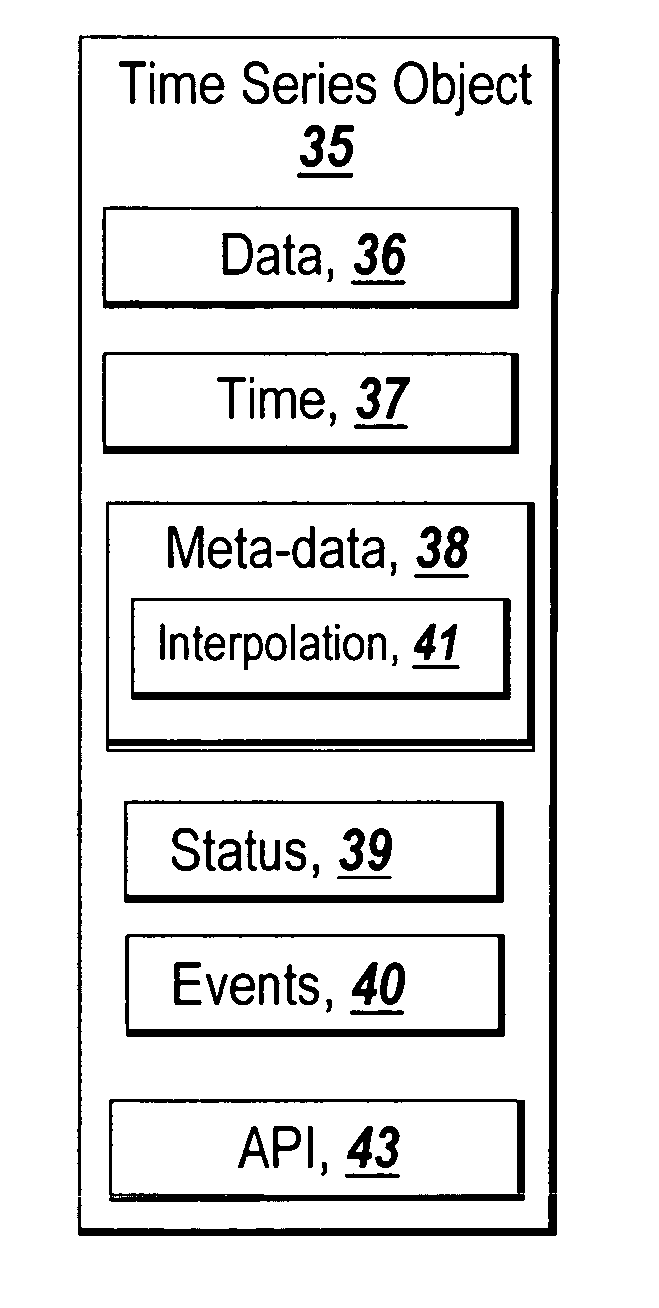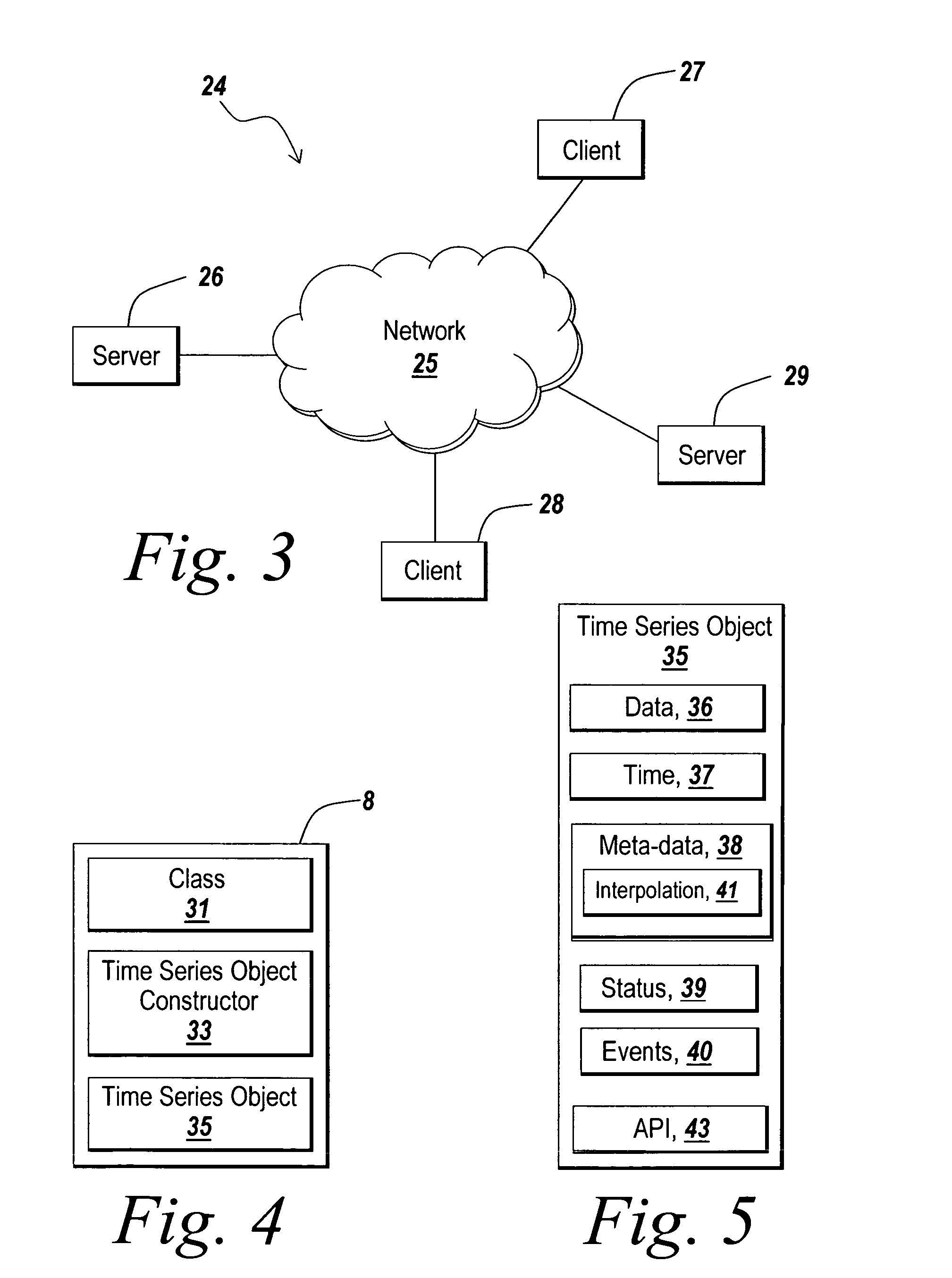Analysis of a sequence of data in object-oriented environments
a data sequence and object-oriented technology, applied in the field of data analysis tools, can solve the problems of difficult analysis of non-uniformly sampled time series data, difficult to combine and compare, etc., and achieve the effects of reducing the probability of an analysis or programming error, simplifying the syntax, and facilitating and efficien
- Summary
- Abstract
- Description
- Claims
- Application Information
AI Technical Summary
Benefits of technology
Problems solved by technology
Method used
Image
Examples
Embodiment Construction
[0030]Certain embodiments of the present invention are described below. It is, however, expressly noted that the present invention is not limited to these embodiments, but rather the intention is that additions and modifications to what is expressly described herein also are included within the scope of the invention. Moreover, it is to be understood that the features of the various embodiments described herein are not mutually exclusive and can exist in various combinations and permutations, even if such combinations or permutations are not made express herein, without departing from the spirit and scope of the invention.
[0031]The illustrative embodiment of the present invention provides a data analysis tool for analyzing time series data in an object oriented environment. Although the data is indexed with time in the illustrative embodiment, one of ordinary skill in the art will appreciate that the data can be indexed with different quantities, such as frequency and position, in o...
PUM
 Login to View More
Login to View More Abstract
Description
Claims
Application Information
 Login to View More
Login to View More - R&D
- Intellectual Property
- Life Sciences
- Materials
- Tech Scout
- Unparalleled Data Quality
- Higher Quality Content
- 60% Fewer Hallucinations
Browse by: Latest US Patents, China's latest patents, Technical Efficacy Thesaurus, Application Domain, Technology Topic, Popular Technical Reports.
© 2025 PatSnap. All rights reserved.Legal|Privacy policy|Modern Slavery Act Transparency Statement|Sitemap|About US| Contact US: help@patsnap.com



